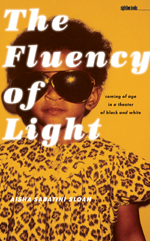MMXLII Viewpoint: What Are You?
MMXLII: the power of diversity
2013-03-01
Joel Wacks
Our guest correspondent Joel Wacks is back with another intriguing article as he takes time to reflect on his personal life. As a person of mixed race there is a common question he seems to always be asked, and for one reason or another…it doesn’t sit too well. Hit the jump and take a look at his opinion and see what many other people of mixed race have to deal with constantly. Take a walk in their shoes so you can think about how that question may come across for some people. And if you are of mixed race, this is probably a story you can relate to.
A week or two ago I spent a weekend in New York, where I happened to chat, briefly, with a girl from Maryland. Or at least a girl who went to school in Maryland- it might be that she was from somewhere else originally. There were several minutes of generic pleasantries, and then she asked me, just as pleasantly as she’d asked my name and about my flight, what I was. Those were her exact words. “What are you?”
It was a question I found jarring and unpleasant. Which is unfair- it wasn’t unpleasantly, I’m sure, and I certainly had no excuse for being jarred. It’s a question I’ve been asked many times, by many people, for as long as I can remember. The truth is, though, that the more times I’m asked what I am, the more bothersome I find it. On the flight back to California, I had some time to think about why.
As an English major, I’ll start the discussion with a close reading, an analysis of the diction used in this three-word query. I’ll go ahead and say right now that it could usually be phrased more sensitively. I’ve heard stabs at this, actually- “What ethnicity are you?” “What nationality are you?” “Where are you from?” invariably followed by the clarifying but not necessarily enlightening “No, I mean originally?” For whatever reason though the most common formulation remains the simplest- “What are you?” (Of course the evidence for this is purely anecdotal, as much as I wish I had I haven’t actually kept track.)
It’s the “what” I think, that’s the sticking point. There’s some ugly implication, not entirely accidental I suspect, that you don’t fit into acceptable categories or genres, that you’re something completely different, unrecognizable, freakish. It’s telling that the snarky response most often suggested by my friends and family is “Human.” After all, who else is asked what they are besides the racially ambiguous? It’s what you ask the Terminator when his flesh scrapes away to reveal the robot beneath. It’s what you ask the newest Batman villain, right before he does you in. It’s what you ask Frankenstein’s monster, when you notice all those stitches. “What” is for monsters. When you’re talking to people, you usually say “who.” But of course, if you ask someone “Who are you?” they’d just tell you about themselves, and might forget to mention race at all.
Which brings me to the second issue I have with “What are you?” I never know how to answer. When I was younger, I would tell people that I was half Chinese and a quarter Jewish, falling prey to the racism of marked terms and assuming that the final fraction of unadulterated WASP DNA needed no explaination. At some point I figured out that the fractions didn’t add up, and switched to “Half Chinese and half white.” That formula lasted for years, before I began to worry that it sounded too much like a formula. “Half and half.” It made me feel like a cocktail, or a dairy product…
Read the entire article here
